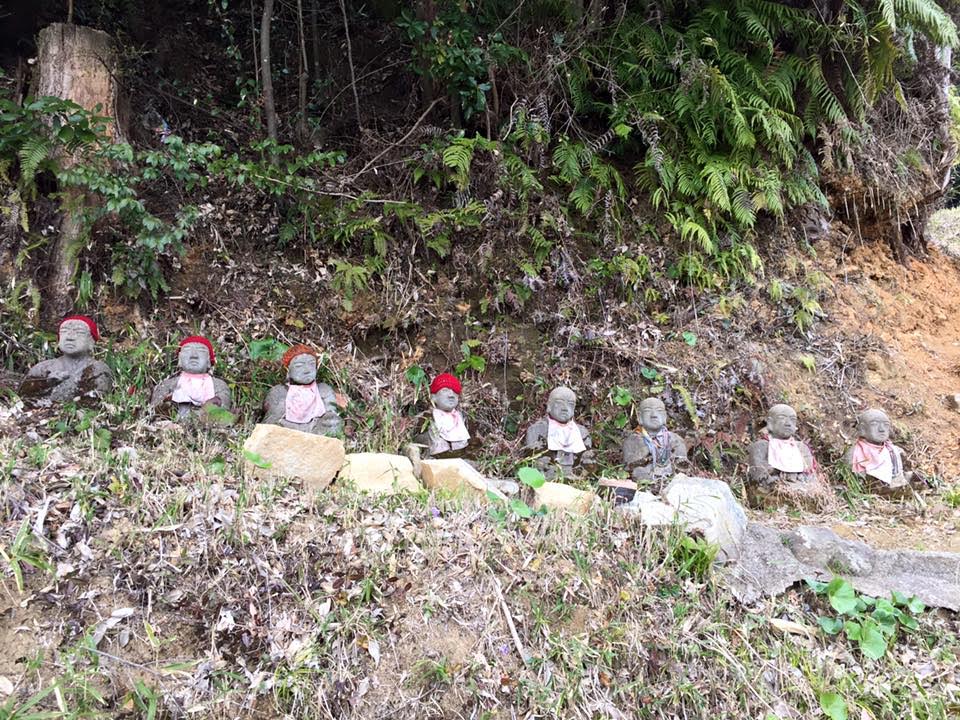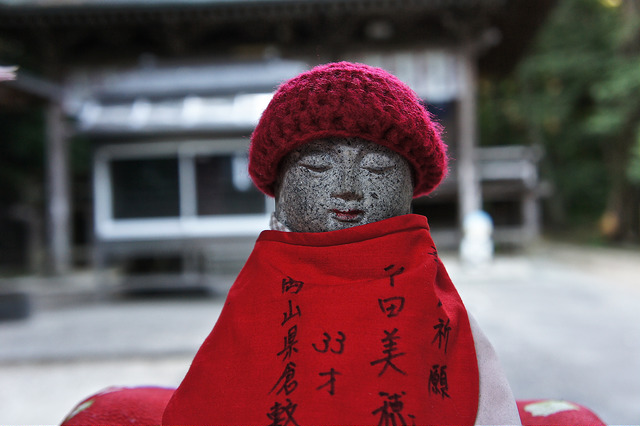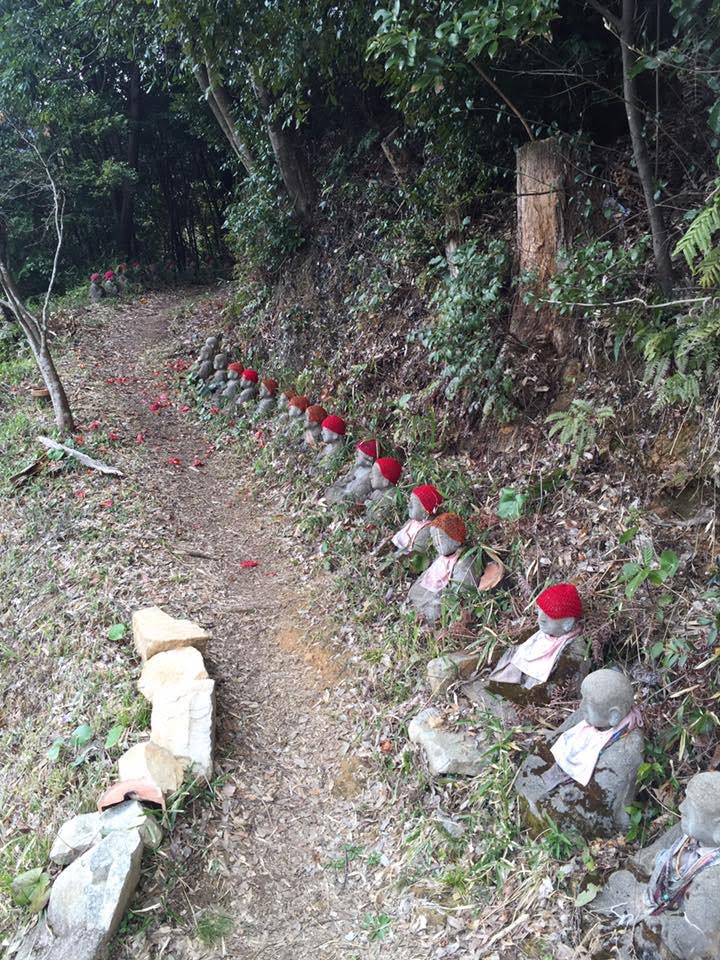In the cemetery at Rurikoji, an historic temple in Yamaguchi, Japan famed for its towering pagoda, a narrow path meanders up the hillside and into the forest above. Lining the path are dozens, maybe hundreds of little stone statues resembling plump-cheeked children or a placid Buddha-like figures.
Almost all the little statues, known as Jizo or the honorific O-Jizo-san or O-Jizo-sama, wear redknit caps. Some wear red, green, or pink bibs; some wear knit capes or an infant’s coat; somehave beads placed around their neck. Higher up on the path, under the cover of trees, a fewhave offerings placed next to them: little toys or trinkets, fruit, flowers, piles of pebbles. One even had a mini basketball – the kind a child might win at a carnival or arcade.
Looking down upon the aging, tightly clustered graves climbing up the hill, the Jizo seem at firstglance to be a cheerful addition to a rather solemn place. It’s not uncommon for visitors or tourists to remark on how “cute” they are.
But their sweet appearance belies a mournful purpose. Jizo statues represent Jizo Bosatsu, a divinity in Japanese Buddhism who protects children who have died before their parents.
Dating back as far as the 14th century, if not earlier, the belief is that when a child dies they have not accrued enough good karma on earth. So children are sent to Sai no Kawara, a limbo on the banks of the mythical Sanzu River – the river souls must cross into the afterlife. At Sai no Kawara, children must endlessly stack stone towers in order to atone for the pain they caused their parents, as well as to gain enough merit to someday cross the Sanzu. Their suffering is exacerbated by the demons that populate the riverbed, coming out at night to knock over the stone towers the children have built. The children are doomed to keep building and rebuilding the towers. (This is why you will often see little piles of rocks or pebbles next to a Jizo statue – it is an attempt to shorten the time a child might have in Sai no Kawara.)
Instead of moving on to enlightenment, it is said that Jizo Bosatsu instead chose to spend eternity ushering the lost souls of children across the Kanzu River hidden in the sleeves of his robe.
Mourning parents clothe Jizo statues and bring them offerings in the hopes of accruing merit for their children in the afterlife. Though an adorned Jizo usually indicates death – red being the color of life, death, and protection in Japan – sometimes a Jizo statue clothed in bright colors, surrounded by gifts, indicates that a child survived an illness. The offerings and adornment are to thank Jizo Bosatsu.
And while Jizo is primarily associated with stillborn, miscarried, or aborted children, or children who died very young, he also protects all children, as well as women, travelers, and lost souls in general.
You can find Jizo statues all over Japan – in temples, cemeteries, even tucked to the side of busy streets. There are literally thousands of Jizo statues peppering the country.
So if you’re ever in Japan and you spy a kawaii (cute) little round-faced statue wearing a knit cap and bib, take a moment to consider why that statue is dressed like that and maybe help out bit by stacking a pile of stones.
Sources/more on Jizo
Japan’s Colorful Gravestone Decorations Protect the Souls of Lost Children




